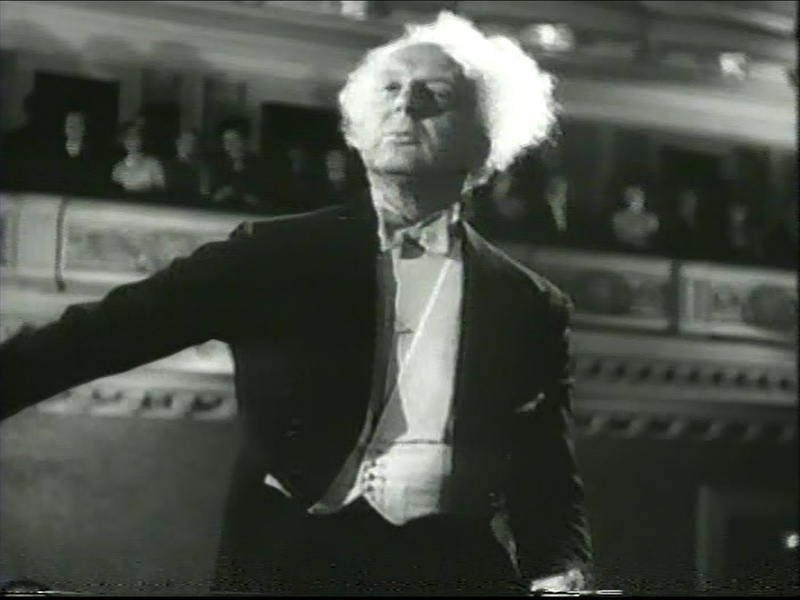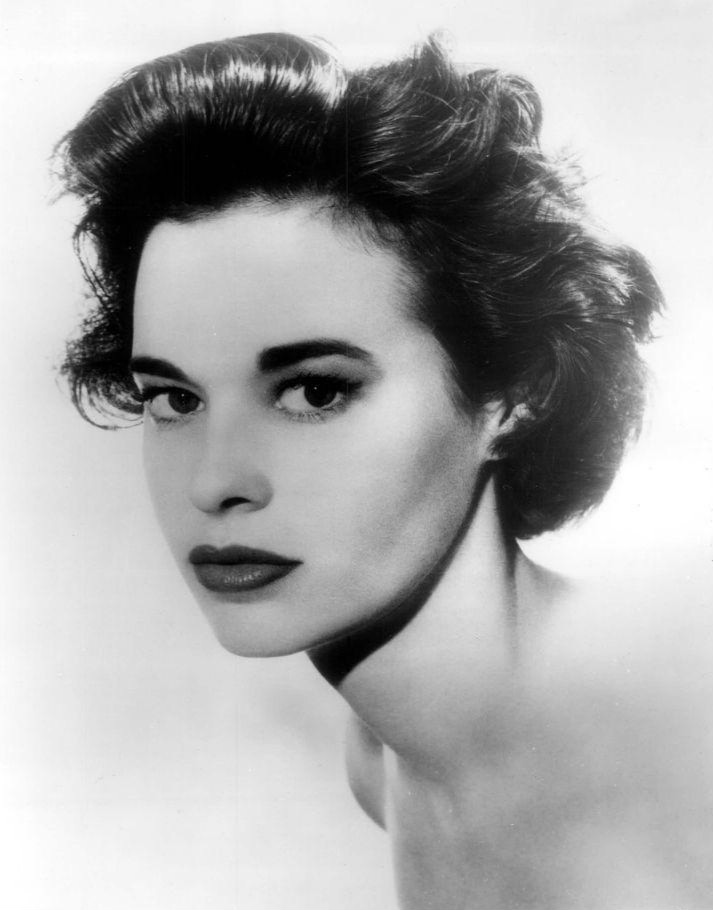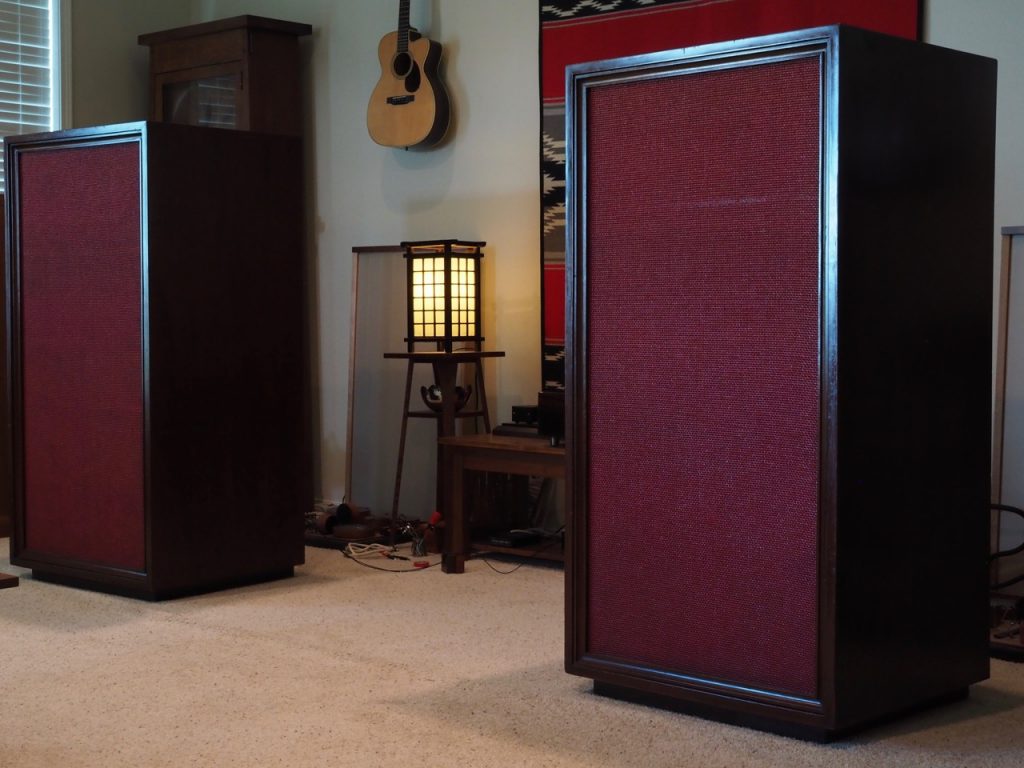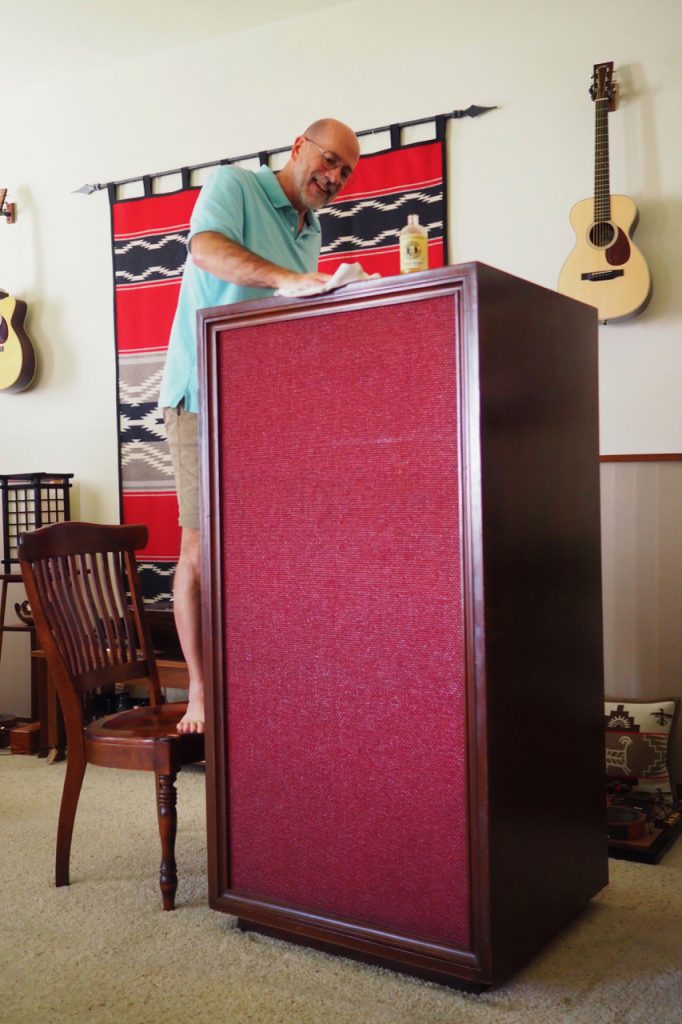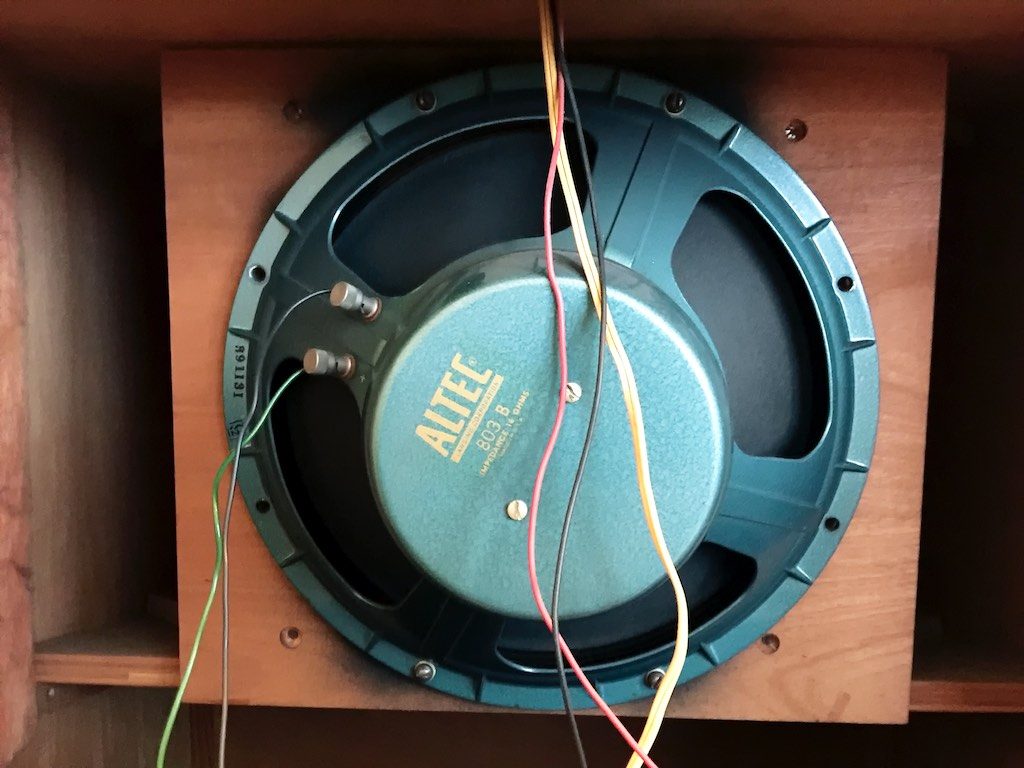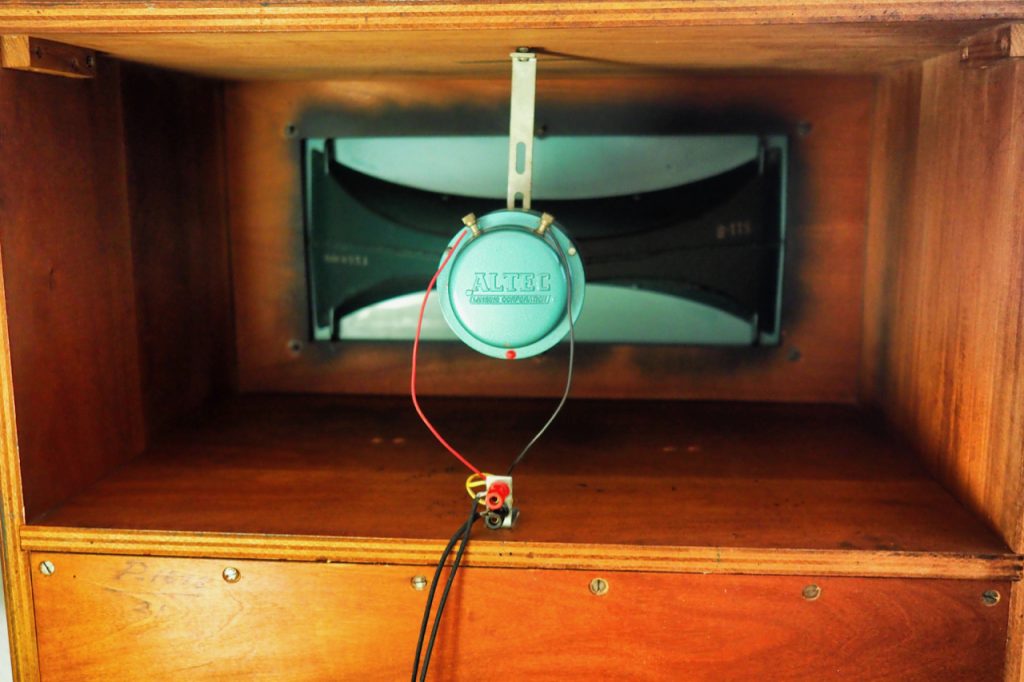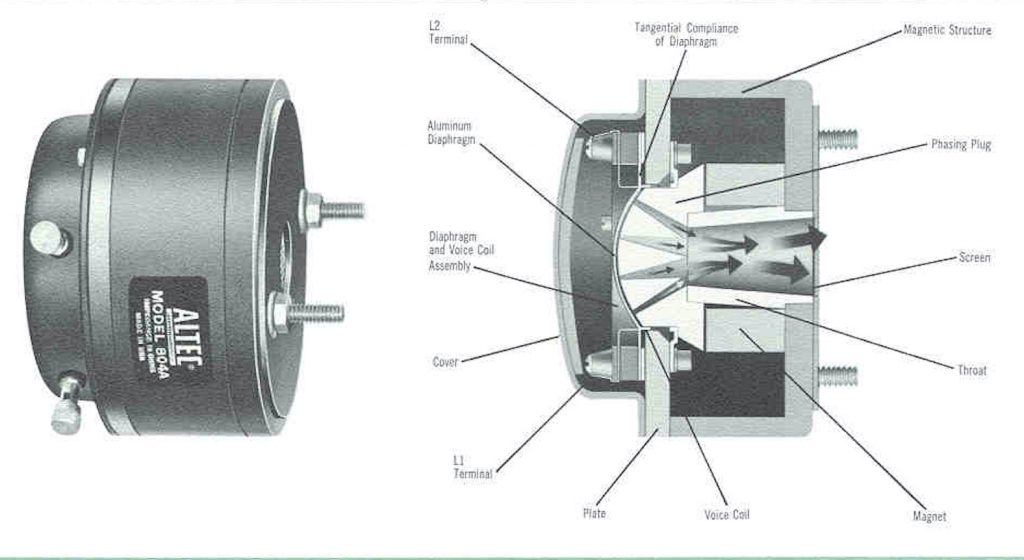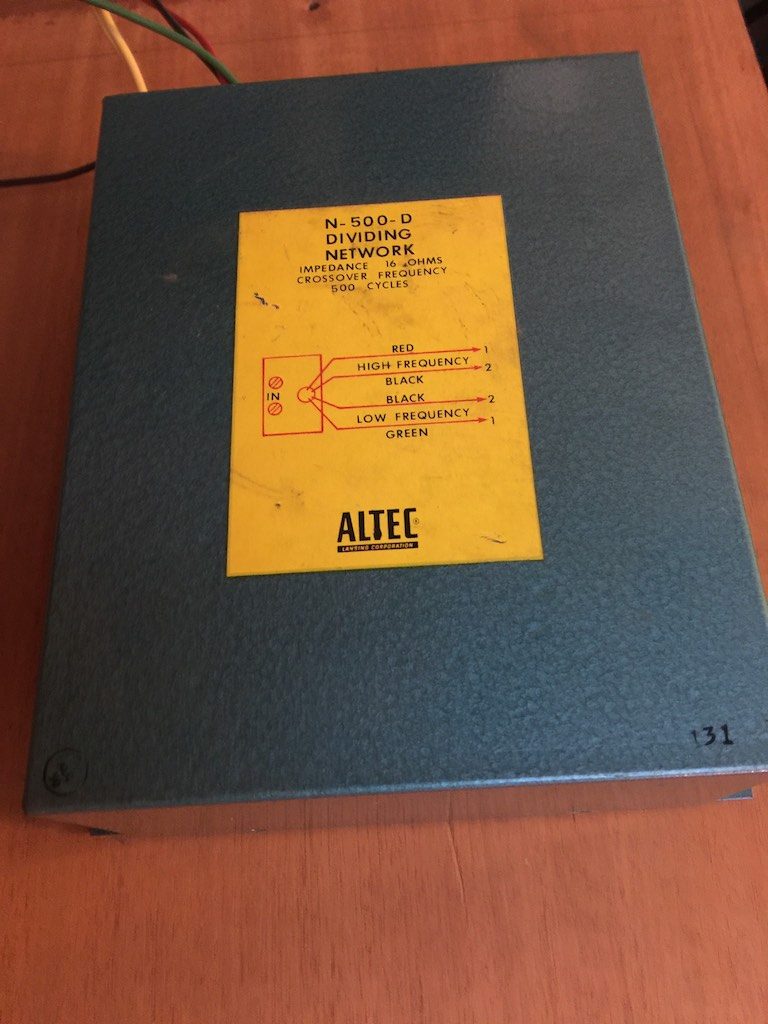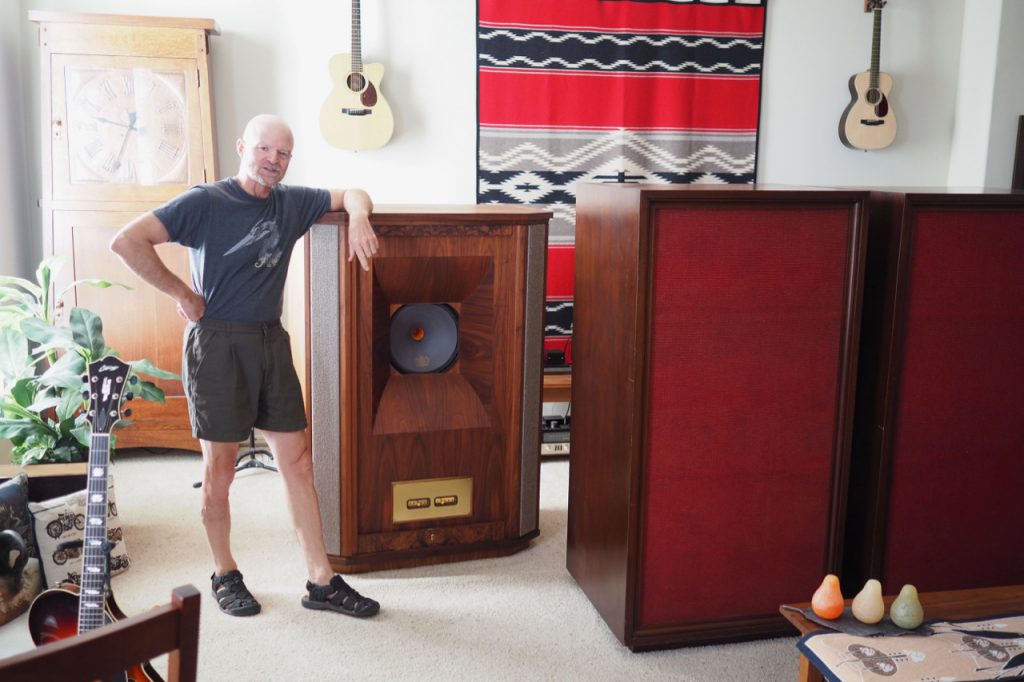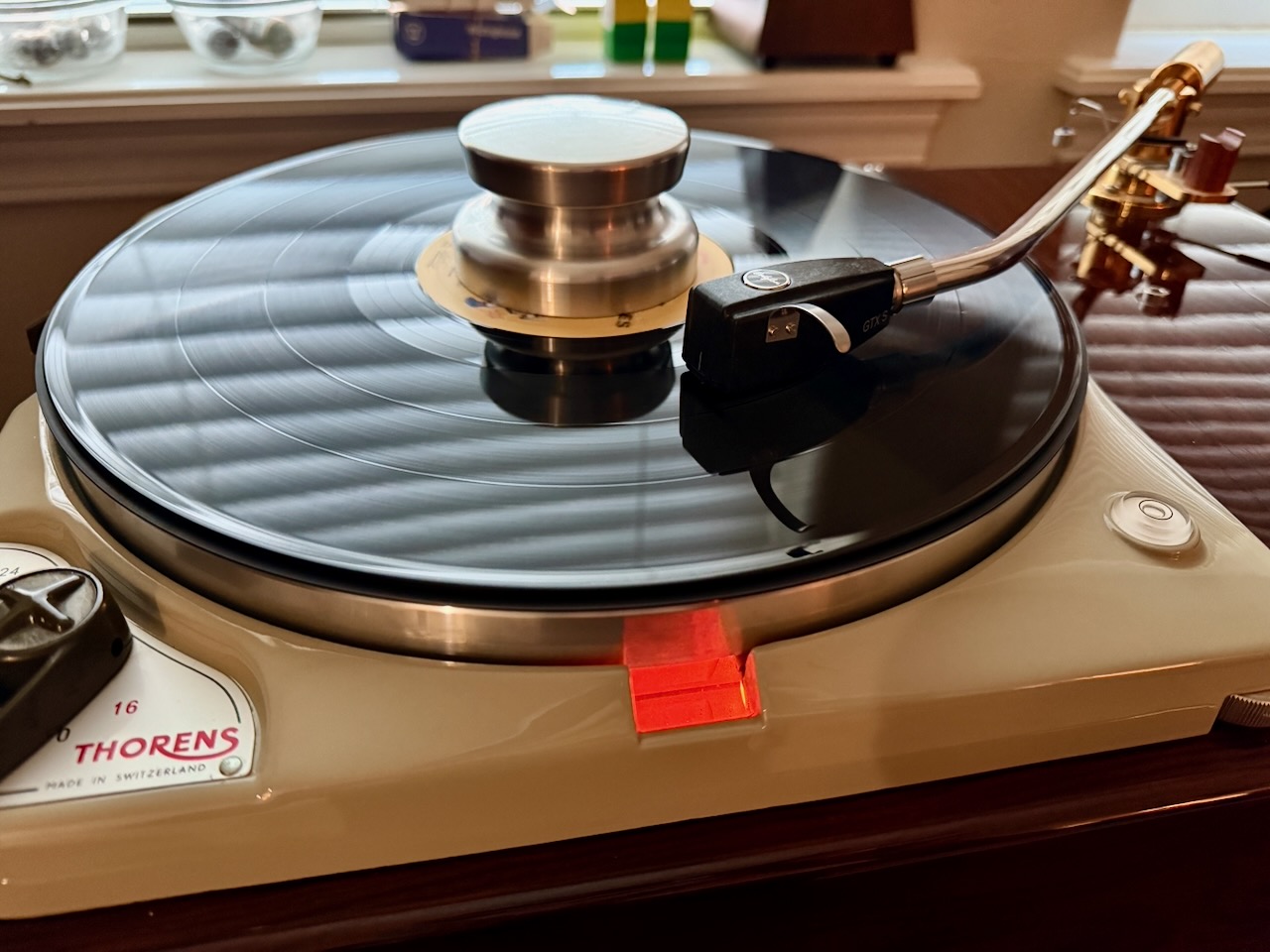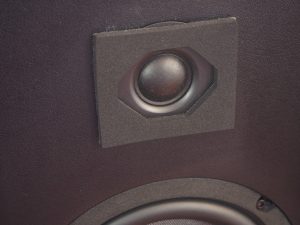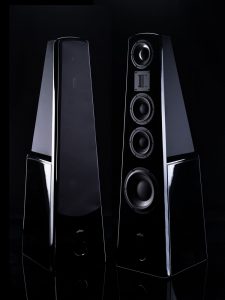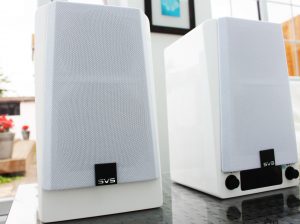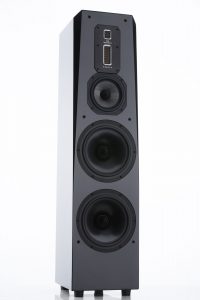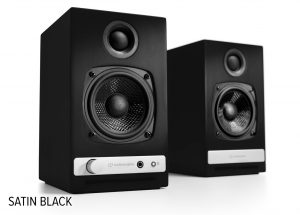Leopold Stokowski at Carnegie Hall 1947 (public domain photo)
Dr. Leopold Stokowski
Now let me tie these custom Altec loudspeakers back to their original owner, the famous conductor, Leopold Stokowski, and fill in the gaps as to why that matters with respect to their performance.
The "Stokowski" Altec's were custom built loudspeakers for Dr. Leopold Stokowski (April 18, 1882 – September 13, 1977), during the time he lived in New York and was conducting the American Symphony Orchestra.
It is fairly common knowledge that Leopold Stokowski was one of the world's leading conductors during his lifetime, and conducted numerous symphony orchestras, including of the Cincinnati Symphony Orchestra, the Houston Symphony Orchestra, the NBC Symphony Orchestra, the New York Philharmonic Symphony Orchestra, the Philadelphia Orchestra, and the Symphony of the Air, as well as others.
Leopold Stokowski was a remarkable and creative individual and musician, who was also very interested in the recording and reproduction of music, and had enormous influence upon the world of music, film, recording, audio engineering, and even culture, during his lifetime.
For example, Leopold Stokowski set American culture abuzz by hiring talented women and musicians of color for his orchestras during a time when orchestras were almost exclusively composed of white males.
Gloria Vanderbilt in 1959 (Public Domain Photo)
His marriage to heiress and socialite Gloria Vanderbilt (above, the mother of television personality Anderson Cooper), and his liaison with film star Greta Garbo (below), set the media world abuzz about his high-profile relationships and celebrity lifestyle.
Greta Garbo (Public Domain Photo)
Another fascinating aspect of Leopold Stokowski's life—which is particularly relevant to his Altec loudspeakers—was that early in his career he became interested in the technical aspects of the recording and playback of music, something that most conductors of the time eschewed.
To aid Leopold Stokowski in his interests, Professor Charles Weyl at the University of Pennsylvania created a tailored curriculum for him that focused on what he needed to know about acoustics and electrical engineering in order to more effectively participate in guiding the technical activities of the audio engineering that he had become involved in.
The University of Pennsylvania eventually awarded Leopold Stokowski an honorary doctorate for his accomplishments in music, audio engineering, and film.
Leopold Stokowski worked closely with recording engineers during the acoustic horn recording era (1917-1924), the electrical recording era (1925-1940), and the "modern" analog recording era until his death (1941-1977), always striving for improved fidelity of recorded music. He heard it all.
Leopold Stokowski was very involved in advancing the recording and playback of music and worked closely with audio engineers from Altec Lansing, Bell Labs, Disney, RCA, and others, to advance the recording arts for records, film, and radio broadcast.
Leopold Stokowski loved experimenting with recording and playback technology and was involved in the development of multi-track recording used in some of the first stereo recordings.
He also collaborated with RCA in the use of a multi-track film recorder for the movie 100 Men and a Girl, in which Stokowski played a speaking part, and also with the Fantasound multichannel sound system developed by RCA and Disney engineers for the famous animated movie Fantasia.
So, have you ever wondered what a famous conductor like Dr. Leopold Stokowski—who was not only a brilliant conductor and musician, but was involved in every aspect of research and development advancements in film, recording, and the audio arts during their peak performance advancement periods—would build as his own ultimate loudspeakers for his personal home listening?
Well, you don't have to wonder, as you are looking at them in the above photo—the "Stokowski" Altec's.
The "Stokowski" Altec's are rather large loudspeakers (60 inches high by 30 inches wide by 26 inches deep), with Altec drivers, horns, and crossovers enclosed in truly massive custom wood cabinets, and fitted with burgundy grill cloth.
You can get an idea of the "Stokowski" Altec's size in the photo below where I am polishing them with some Kramer's Best Antique Improver prior to the start of the Duelund-Altec Project—they're even bigger than my Tannoy Westminster Royal SE loudspeakers!
The "Stokowski" Altec's were built very solidly and professionally, with everything fitted perfectly together.
These are vintage loudspeakers—they're almost six decades old now—and so their cabinets have accumulated a few scuffs and scrapes over the years, but still they are in very nice cosmetic condition considering their age, and the drivers, horns, crossovers and cabinets are in perfect operational condition—a testimony to the impeccable quality of Altec products of that period.
The cabinets that enclose the "Stokowski" Altec's provide substantial reinforcement for the 825-style bass horns that are incorporated into their cabinetry.
There is a divider panel between the low- and high-frequency horn sections of the cabinets—which would be an 825-style bass horn's top panel—that acts as a massive cross-brace to the cabinet's sidewalls.
The rear of the cabinet is broken into three segmented panels with further cross-bracing for the sidewalls, whereas the production 825 cabinet is a large, single, screw-mounted panel with no cross-bracing.
The heavily braced front panels are inset into the oversized sidewalls, so they too are acting as additional bracing, and the mounting panel for the 511B is also acting as yet another cross-brace.
All of that bracing and cabinetry adds up to a rigidity and massiveness for the "Stokowski" Altec cabinets that is off the charts compared to the regular production 825 bass horn cabinets like I have in my Altec A5 Voice of the Theatre loudspeakers.
The Stokowski Altec's components complement are 803B 16-Ohm bass drivers housed in the massively braced 825-style bass horn cabinets, Altec 804A 16-Ohm compression drivers that are mounted on Altec 511B horns and enclosed in their own dedicated high-frequency enclosure of the cabinets, and the Altec N-500-D crossovers are mounted inside the low-frequency cabinets.
The 803B low frequency driver is described in the Altec literature as, "The Altec 803B is a 15-inch low frequency loudspeaker of professional quality, chosen to complement the finest broadcast and recording studio monitor systems (such as the A7 and A7-500) in addition to providing the critical listener with superb bass reproduction for all wide-range public address, sound reinforcement and theatre or auditorium systems."
"Utilizing heavy Alnico V permanent magnets (2.4 lbs.), rugged, die-cast frames, edge-wound copper ribbon voice coils of the largest practical diameter (3"), and exceptionally compliant cone suspension, these LF transducers combine the advantages of long-term operation with unparalleled response throughout the entire audible bass frequency range (20-1,600 cycles)."
The Altec 803B low frequency driver has a continuous power rating of 30W, a frequency response of 20-1,600Hz, a sensitivity of 99dB (SPL at 4" from 1W), and 114dB (SPL at 4" from 30W).
The Altec 803B low frequency driver has an impedance of 16 Ohms, the cone resonance is 25 Hz, the Alnico V magnet flux density is 12,000 Gauss, the frame (basket) is structurally-reinforced cast aluminum, the cone is molded fiber, the cone suspension is a high-compliance cloth surround with mechanical resistance, the voice coil is edge-wound copper ribbon, the diameter is 15 1/8 inches (7" deep), and the weight is 17.5 pounds.
Up top are the Altec 804A 16-Ohm compression drivers mated to Altec 511-B horns (above).
The Altec 804A and Altec 802D compression drivers are essentially the same design, and are shown together in Altec literature.
The Altec 804A / 802D both use large diameter (1.75") aluminum ribbon edge-wound voice coils coupled to a large (2.25") aluminum diaphragm having tangential compliance. Both have a mechanical phasing plug with two exponential acoustic slots, which provides the proper phase relationship from sound emanating from the center & outer edges of the diaphragm and voice coil assembly, to give maximum high-frequency reproduction and a smooth overall response.
Like the 803B low frequency drivers, both the Altec 804A / 802D are rated for 30W. The Altec 804A / 802D frequency response is 500Hz to 22,000Hz, voice coil diameter is 1.75", impedance is 16 Ohms, and diameter is 4.5".
The primary difference is their magnets, as the 802D uses a 1.2 lbs., 15,250 Gauss magnet and the 804A uses a 13 oz. 13,000 Gauss magnet, which reflects their intended use as compression drivers for sound reinforcement in large spaces with high ambient noise levels (802D), or smaller spaces, like home listening rooms or smaller recording studios with moderate ambient noise levels (804A).
The Altec 804A compression driver is optimized for loudspeakers, "... located in non-reverberant space having moderate ambient noise levels, the Altec 804A driver proves a perfect match (Such conditions would be analogous to the average listening room or smaller broadcast and recording studio)", and pressure sensitivity is rated at 109.5dB at 1W and 124.2dB at 30W.
I actually own examples of both the 802D (in my Altec 832A Corona loudspeakers) and the 804A (in the "Stokowski" Altec's), and they are both extremely good sounding compression drivers.
The Altec 804A compression driver and 511B sectoral horn combination was crossed over at 500Hz with Altec N-500-D crossovers.
Altec describes the 511B sectoral horn thusly, "Exponential expansion and straight throat configuration ensure uniform control of the sound dispersion pattern—90º horizontal by 40º vertical—and exacting reproduction of the middle and high frequencies."
The 511B sectoral horn weighs 17¾ pounds, and is 27 cm in height by 60 cm in width by 47 cm in depth.
These Altec loudspeakers were probably built for Dr. Stokowski during the period when their drivers were produced—1961 to 1964—which would put them at 58 to 55 years old, which slightly preceded the official start of production for the Altec A7 Voice of the Theatre loudspeakers, which commenced in 1966, which is what their component selection is most similar to in the Voice of the Theatre loudspeaker product line.
After a long career conducting in America, at age 90, Leopold Stokowski moved back to London in May of 1972 in order to further his recording career, and at that time he gave the loudspeakers to his conductor understudy colleague, who then later put them up for sale.
Jeff (another Jeff) was living in New York at the time, and became aware that the "Stokowski" Altec loudspeakers were for sale, and he bought them. Jeff later moved to Seattle and brought the "Stokowski" Altec's with him.
Eventually, Jeff and Lynn (Jeff's wife) decided that the "Stokowski" Altec's were just too big for their Seattle condo, and put them up for sale.
In November 2015 I became aware that Jeff had the "Stokowski" Altec's for sale, and my buddy Ron Barbee and I made the trek to Seattle to check them out.
We gave them a quick listen, and I liked what I heard from the big "Stokowski" Altec's, so I paid Jeff for them, and Ron and I loaded the "Stokowski" Altec's into his van, we made the drive home, and unloaded them.
It was a long day of driving back and forth to Seattle during the midst of winter weather, and as soon as we got to my place we unloaded the Altec's and placed them in the closest possible place inside my house, the office/bedroom just off my entryway, and called it a day.
There the "Stokowski" Altec's remained, pleasantly playing music until September of 2018, when my buddy Chad visited from Seattle, and Chad and I moved them into my living room and set them up where my Westminster's normally reside in preparation for the upcoming Duelund-Altec Project (above).




